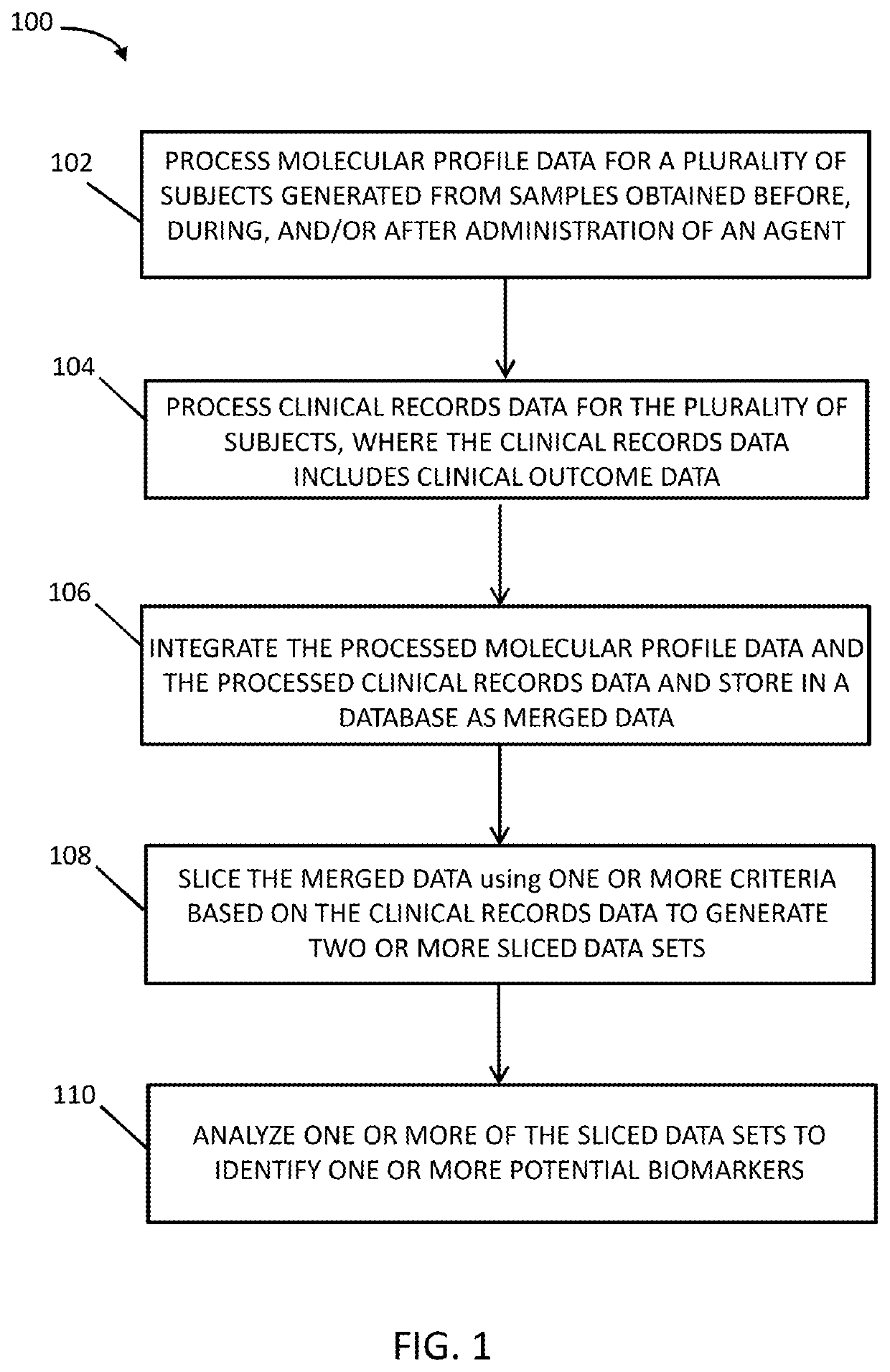Systems and methods for patient stratification and identification of potential biomarkers
a biomarker and patient technology, applied in the field of systems and methods for patient stratification and identification of potential biomarkers, can solve the problems of limiting the ability to discover new or unknown relationships, limiting the ability to discover other relevant variables, and pre-selecting variables
- Summary
- Abstract
- Description
- Claims
- Application Information
AI Technical Summary
Benefits of technology
Problems solved by technology
Method used
Image
Examples
example 1
Identification of Candidate Biomarkers in an ongoing Phase I Clinical Trial of Coenzyme Q10 for Treatment of Advanced Solid Tumors
[0473]Patients enrolled in an ongoing Phase I clinical trial of Coenzyme Q10 for treatment of advanced solid tumors were evaluated to identify candidate biomarkers to guide the use of Coenzyme Q10 for the treatment of cancer. This example includes preliminary analysis conducted while the trial was ongoing. Example 2 includes a more in depth analysis conducted at a later period in the same clinical trial when more patients were enrolled and more data was available.
[0474]Trial Design
[0475]The clinical trial is a multicenter, open-label, non-randomized, dose-escalation study to examine the dose limiting toxicities (DLT) of Coenzyme Q10 administered as a 144-hour continuous intravenous (IV) infusion as monotherapy (treatment Arm 1) and in combination with chemotherapy (treatment Arm 2) in patients with solid tumors. A broad range of solid tumors has been eval...
example 2
Identification of Candidate Biomarkers in a Phase 1 a / b Clinical Trial of CoQ10 for Treatment of Patients with Solid Tumors
[0505]Example 2 includes an analysis of candidate biomarkers in a Phase I clinical trial of CoQ10 for treatment of patients with solid tumors employing the CTAW 400 described above with respect to FIG. 4. Example 1 was based on a preliminary analysis of data obtained from some of the same patients in the same clinical trial; however, Example 2 is based on a larger number of patients, includes additional data, and incorporates additional analysis.
[0506]Trial Design
[0507]The trial was conducted for 36 months for patients with solid tumors at Weill Cornell University Medical Center, Palo Alto Medical Foundation and MD Anderson Cancer Center. This is a Phase 1 a / b clinical trial of a standard 3 +3 dose escalation design. The primary purpose of the trial was to determine the maximum tolerated dose and assess the safety and tolerability of CoQ10 alone and in combinati...
PUM
 Login to View More
Login to View More Abstract
Description
Claims
Application Information
 Login to View More
Login to View More - R&D
- Intellectual Property
- Life Sciences
- Materials
- Tech Scout
- Unparalleled Data Quality
- Higher Quality Content
- 60% Fewer Hallucinations
Browse by: Latest US Patents, China's latest patents, Technical Efficacy Thesaurus, Application Domain, Technology Topic, Popular Technical Reports.
© 2025 PatSnap. All rights reserved.Legal|Privacy policy|Modern Slavery Act Transparency Statement|Sitemap|About US| Contact US: help@patsnap.com



